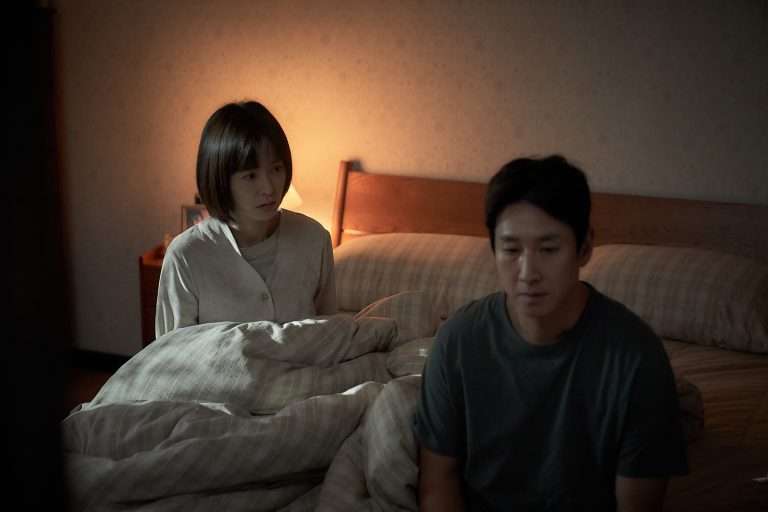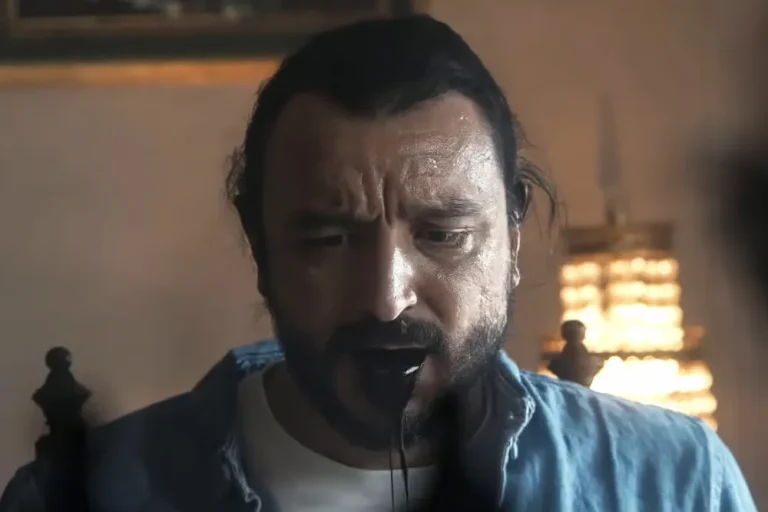The opening shot of Robe of Gems, the feature directorial debut of editor Natalia López, is a carefully framed image of a tree standing silently in the beautiful early morning. However, this tranquillity is soon interrupted when a gardener barges into this landscape, thrashing away the weeds. This brief prologue serves as a microcosm of the Silver Bear-winning feature film, in which a seemingly ordinary rural town in Mexico is so infested with violence that being an unwitting participant is the only option for its inhabitants. It is a restrained work (often frustratingly so) whose overt reliance on its formal eloquence does come at a narrative cost. But those willing to stick around would be rewarded by a hauntingly uneasy finale that resists catharsis.
The film intertwines the stories of three women living in rural-side Mexico. Isabel (Nailea Norvind) has recently separated from her husband and shifted to an old countryside mansion which she has received as a family inheritance. Accompanying Isabel are her two children, Valeria (Sherlyn Zavala) and Benjamín (Balam Toledo), and the family maid, Maria (Antonia Olivares). Maria’s sister has gone missing following an abusive relationship with a taxi driver.
The local police officer, Roberta, is investigating the case, but in a place where every day a corpse turns up in the landfill, it is hard to find a lead. Meanwhile, Roberta’s son Adan (Juan Daniel Garcia Treviño) is getting involved with drug addicts and ruffians, much to her chagrin. Isabel, sympathetic to Maria’s plight, decides to take matters into her own hand to locate the latter’s sister. However, she finds her idealism thwarted when she comes across some menacing presences lurking and thriving in the local community.
Director Natalia López’s inspirations derive from formal and slow-cinema approaches with shades of symbolism scattered throughout. Adrian Durazo’s beautifully observed cinematography employs a static camera and long takes, though the approach is not fly-on-the-wall, as evidenced by the carefully orchestrated framing. While this lingering aesthetic often comes at the cost of narrative development in the film, López’s intent in the film is to resist the conventional three-act structure to account for a more spatial and temporal situation of its setting. Although not without flaws, this is a brave choice considering how self-assured several filmmakers claim to be when filming and documenting lives outside their purview.
In several interviews, López has mentioned her being an outsider despite having lived in the Mexican countryside for over a decade. Like the light-skinned and privileged, Isbael, Lopez does not articulate for the rural population, not wanting to put “invented emotions or invented words” in their mouths. As Maria, early on, tells Isabel—“We see things differently.” Through Isabel’s character (and the film itself), Lopez seems to be cautioning against outsiders taking matters into their own hands and unleashing a cycle of violence.
With its central concern revolving around a missing woman, the film easily could have been a whodunit with familiar images of violence prevalent in similarly-themed films. While López does not spare us the unflinching brutality, her focus is more on the monotony and everydayness of such violence and our complicity in it. All this, however, comes too later in the narrative, before which the film spends way too much runtime to set up the space. The three women in the narrative deal with violence in their own way, although their motives and intentions, though hinted at, are never fleshed out. Isbael’s masochistic behavior that leads her into the darkest corners of the place and away from her children is not fleshed out enough to make us invest in her quest.
Maria, performed brilliantly by Antonia Olivares, knows more than she lets anyone know but does not get enough screen time to locate the turmoil that results due to her gender and class-based situation in a male-dominated society. Roberta has a fraught relationship with her incorrigible son, which she partially blames her emasculated husband for. She is one of the more morally sound characters in the film—although, by the end, even Roberta’s ethics are shaken to the core when tragedy strikes home. López’s focus on these female characters from different walks of life is certainly commendable, but her distance from them also results in a somewhat alienating experience.
Like many works of Mexican literature, violence is a primary theme in Robe of Gems. In López’s vision, the violence is not merely physical but an emotional wound though not any less visceral. Two haunting shots conclude the film—both seemingly addressed to the viewers. Without spoiling anything, the final sequence is a gruesome sight that is played in slow-motion amidst a watching public—accentuating the vision of violence as a spectacle in Mexican society.
Through this compelling conclusion to her film, López raises the question: does simply witnessing violence make one an unwitting participant in the cycle of violence? The uncomfortable ending of the film answers in the affirmative.
Read More: A Wild Patience Has Taken Me Here (2021) Review: A Proudly Queer Short Film that is Simultaneously Tender and Bold
ROBE OF GEMS (2022) MOVIE LINKS: IMDB, WIKIPEDIA
ROBE OF GEMS (2022) MOVIE CAST: FRANCISCO BERDIALES, REINA CARMONA, YARETZI CAZARES







